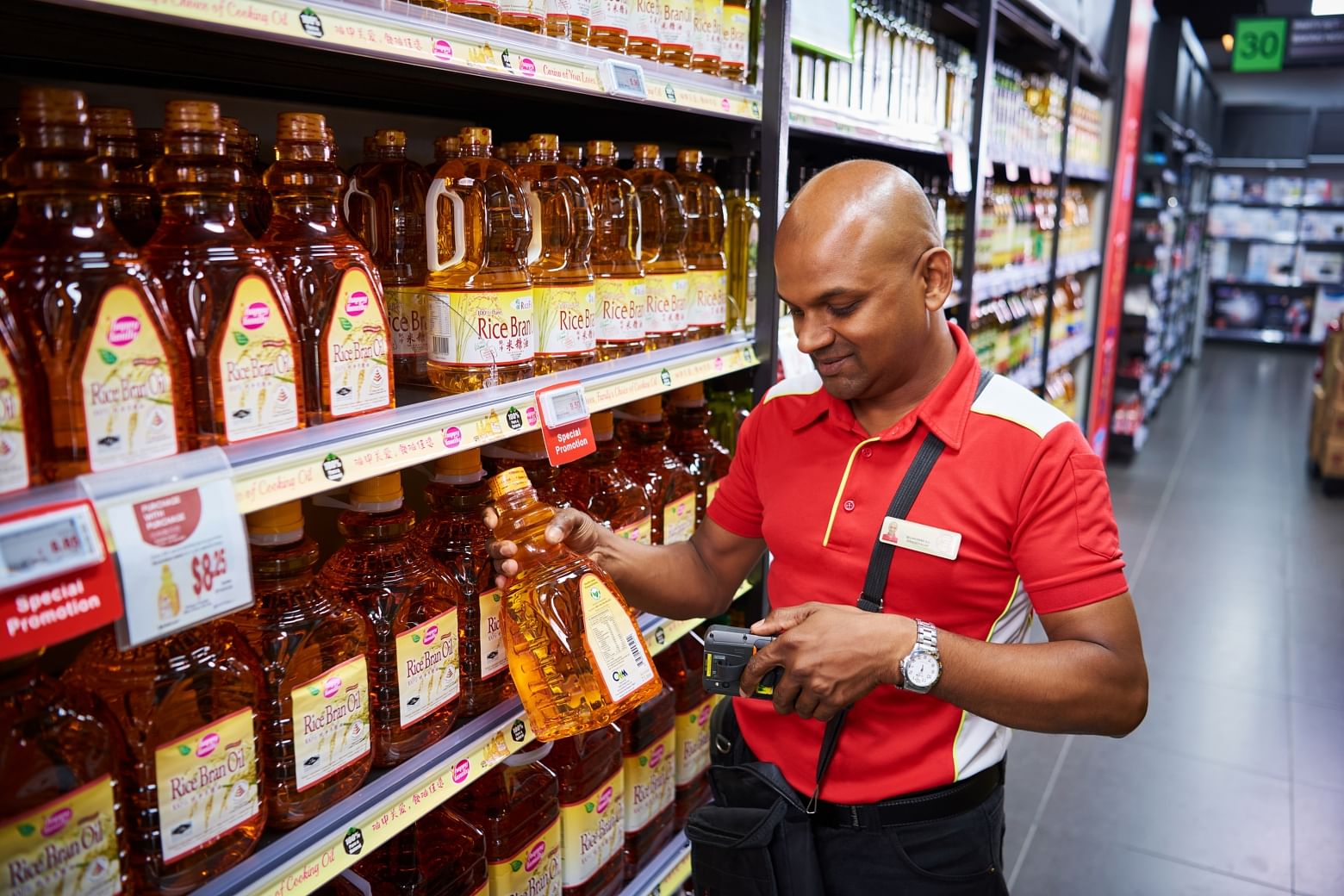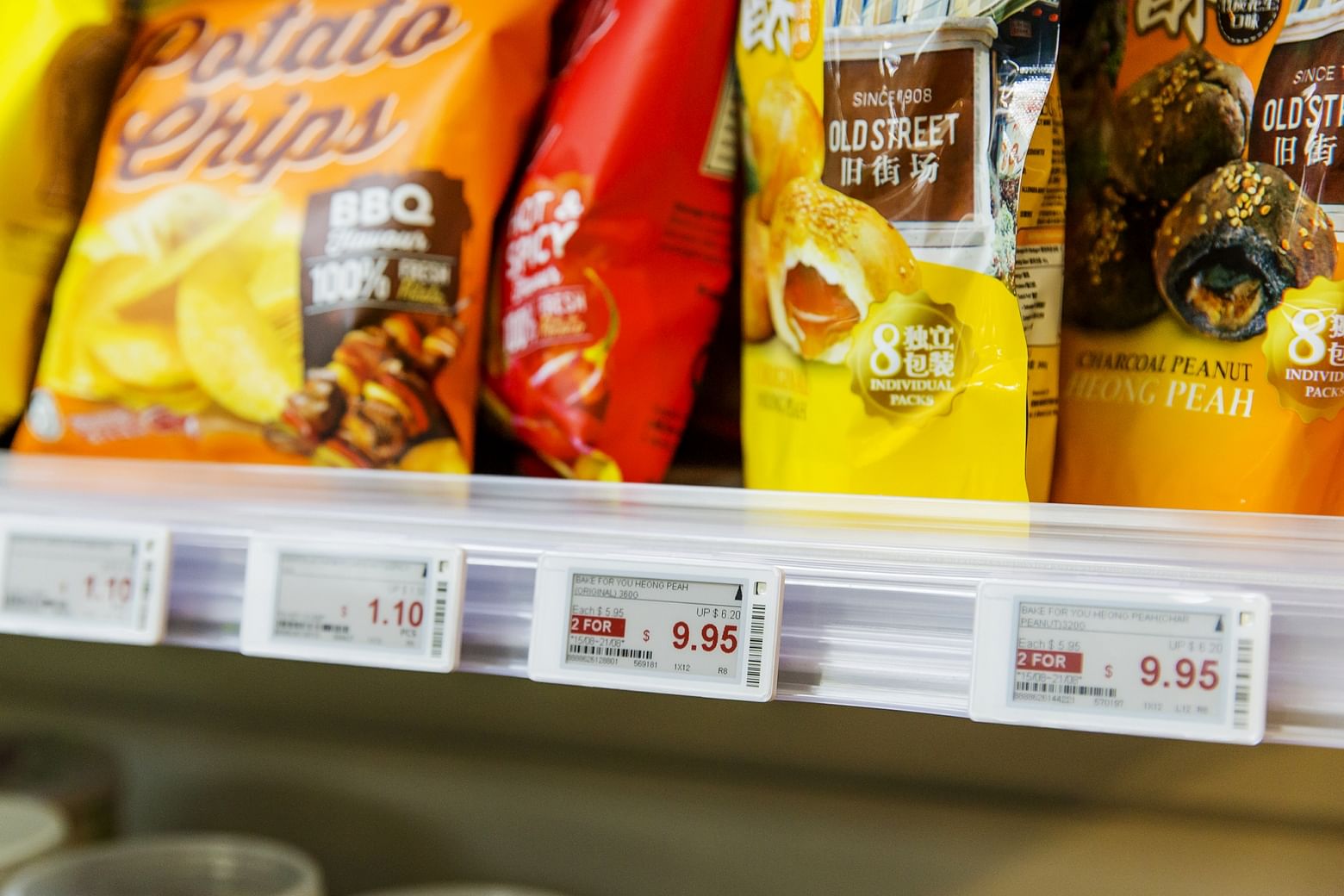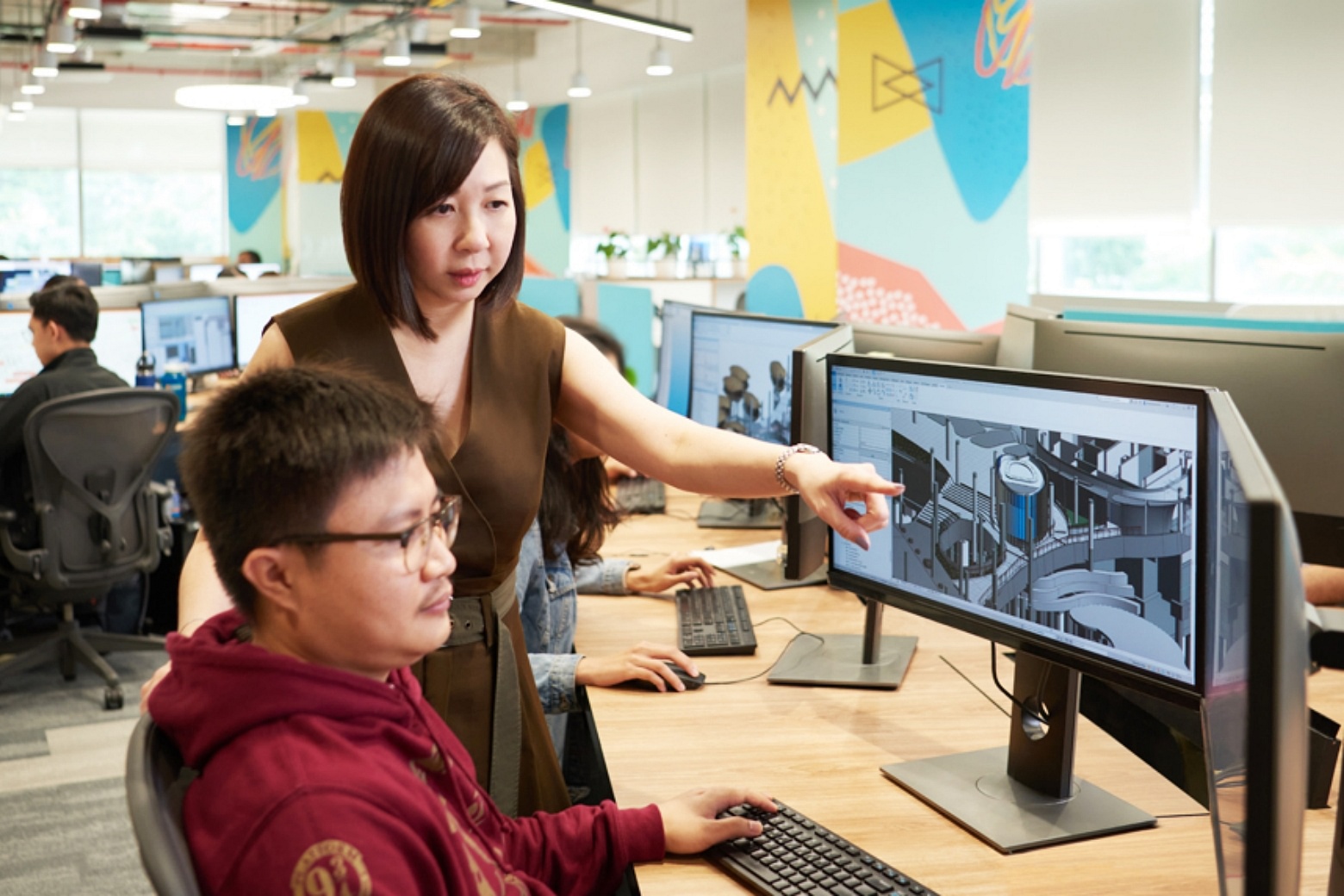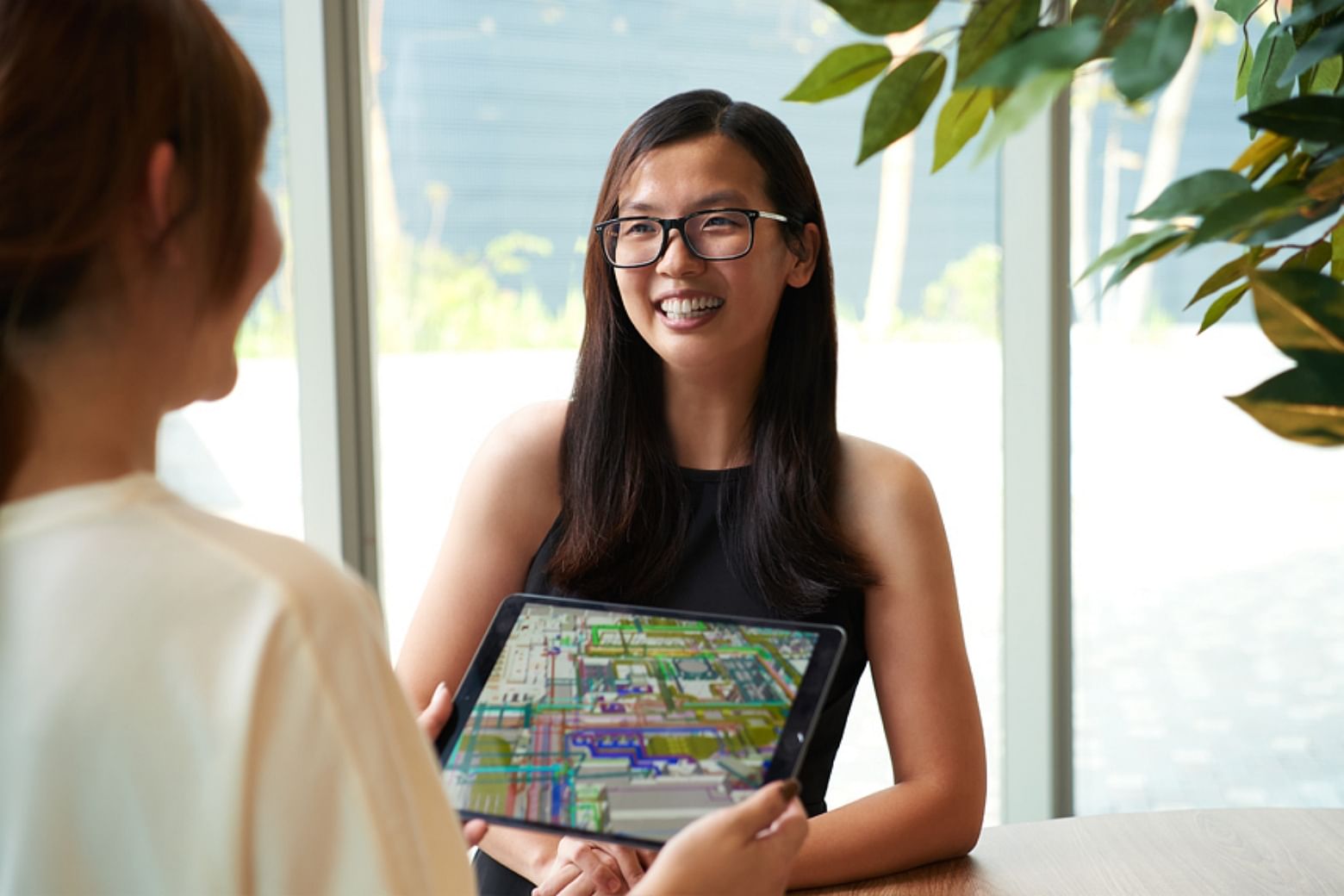BRANDED CONTENT
How technology is actually making employees happier at S'pore companies
Staff at supermarket chain Sheng Siong and construction firm Lum Chang are now experiencing less pressure and feeling more productive because of digitalisation initiatives
Rachel Chia, Content STudio
Follow topic:
As the world barrels ever-deeper into the digital era, how can businesses transform their operations with modern technologies and train staff to wield them to great effect?
Enterprises can seek guidance from refreshed Industry Transformation Maps, rolled out by Singapore's Future Economy Council. The maps help firms across 23 sectors to equip employees with skills for greater value creation.
Two companies that have pioneered the use of new technologies in their fields have reaped significant dividends.
A fresh approach to grocery operations
Can a new checkout counter be the deciding factor as to whether an employee quits or stays?
Yes, going by supermarket chain Sheng Siong’s experience with its “hybrid self-checkout” system, where cashiers scan and pack groceries while shoppers pay by using a digital interface.
Such terminals are common today, but Sheng Siong was Singapore’s first supermarket to introduce them in 2016.
“Last time, it was challenging as we had to count money, and there was a lot of it,” says cashier Mdm Rosnani Mohd Yunos, 57, a Sheng Siong cashier who previously worked at another supermarket brand. “If we miscount (the amount), then we’re finished.”
But with the introduction of hybrid checkout, some Sheng Siong cashiers who wanted to resign chose to stay. No longer would they suffer the stress of being held accountable for the day’s takings.
“Once they didn’t have to handle money, they were happy and willing to do the job,” says chief cashier Mdm Goh Siew Hwa, 55, who oversees a team of six at the chain’s Fajar Road outlet.
“It took about three days, but after getting used to the new system, work is fast and easy,” she adds, citing how prices of produce are weighed and calculated automatically. “Serving a customer takes half the time it used to.”
Bearing fruit
Sheng Siong’s hybrid self-checkout is part of a digital transformation plan it has undertaken since the 2000s to increase productivity among its 3,000 staff, whose ages range from 18 to 83.
Its tech team has built systems such as electronic price tags, a mobile app for shift scheduling, an online supplier portal, and smart inventory and warehouse management systems.

Such capabilities helped Sheng Siong manage waves of panic-buying when Covid-19 hit. Says senior executive Sivakumar Simanchalan: “We could concentrate on replenishing shelves, checking if products were damaged or expired, and have more staff at checkout counters to clear queues.”
It is not only employees who have benefitted from Sheng Siong’s tech upgrade. About 30 of its suppliers have also transformed their businesses with the SkillsFuture Queen Bee programme, which sees Sheng Siong conduct workshops to help them develop digital capabilities, identify skill gaps, and curate training.
Supplier Sing Long Foodstuffs, for example, is reviewing its processes to allow it to better collect data for business decisions.

“Inefficiencies in suppliers’ supply chain or production operations will inevitably result in empty shelves in our stores,” says a Sheng Siong spokesperson.
“Over the years, we have learnt from our mistakes and garnered valuable experience that we can share with our partners to smoothen their upskilling journey. In this closed-loop ecosystem, our productivity is dependent on them."
By the numbers
5
Each of Sheng Siong’s hybrid self-checkout counters can replace five traditional counters, saving 40 per cent of manpower needs
30
The number of product prices that cashiers had to memorise daily before the firm’s digital transformation
67
Sheng Siong’s network of outlets, all of which now boast digitised operations
Building a smarter firm
The North-South Corridor will not be complete till 2027, but the nation’s next major expressway already exists in the digital world created by construction firm Lum Chang Building Contractors.
This is thanks to cutting-edge technology the firm uses to create 3D virtual twins of its projects – such as modelling in the public utilities, trees and roads along Ang Mo Kio Avenue 6, which is part of the area where Lum Chang will build a 1.95 kilometre section of expressway tunnel, as well as drainage systems and overhead bridges.
“In tenders, we are able to show the client our capabilities and give them a visual understanding of how we are going to build the project,” says the company’s senior manager for digital Jennifer Loh, 50.

While these solutions have shaved time, errors and cost off the once-manual construction planning process, Lum Chang’s journey was not all smooth sailing.
“Change management is never simple, nor appreciated by employees who have been doing things the same way for a long time,” says Ms Loh, citing the struggle of some groups, such as 2D drafters who had to be re-skilled as 3D modellers, or subcontractors who had to learn to navigate the new models.
But, she adds: “New employees were impressed with the system we had and how we were able to guide them to grow their skills.”
Strong foundations
To improve its services and secure more prominent projects, Lum Chang, which was founded in the 1940s, kick-started its digitalisation journey in 2011 by becoming one of Singapore’s first construction companies to adopt 3D modelling.
All eligible staff must attend a half-day training within three months of joining the firm. These are conducted by Ms Loh.
For technical assistant manager Lim Chai Yun, 34, 3D software helps cut the five hours she used to take each day to review a typical floor plan by overlaying 2D drawings, checking for clashes and coordinating between the three trades – architectural, structural, and mechanical, electrical and plumbing – by a third.
As for project manager Brydon Eng, 35, the 10 days his team takes to turn project completion projections into construction sequences has been compressed to just half a day.

“Handing over one file to a client, as compared to hundreds of drawings, is a game changer in the industry,” says Mr Eng. “Most importantly, everybody's on the same page.”
Today, with a portfolio valued at more than $11.5 billion and 400 staff, Lum Chang is ready for the next step: Computational modelling.
It is already sending employees for training in this skill to meet its 2025 target of adopting artificial intelligence and automation across the business.
Similar to programming, computational modelling can, for one, calculate in seconds the required length and depth of 1,000 individual foundational piles according to site soil conditions.
“We know the next frontier of digital technologies is rapidly advancing, and this will fundamentally change the way we work,” says Ms Loh. “Our strategy is to constantly look at how we can change with digitalisation and to adapt. This will determine our success, and our ability to stay ahead in the industry.”
By the numbers
30%
Reduction in the number of mistakes and improvement in shop drawings production and quality after implementing 3D modelling technologies
80%
Of Lum Chang staff have been trained in 3D modelling, with all eligible new joiners receiving a half-day training by the three-month mark
25%
Of Lum Chang’s staff are under 30 years old
This is the fifth of a six-part series titled "Transforming today for tomorrow’s challenges" in partnership with the Ministry of Trade and Industry

